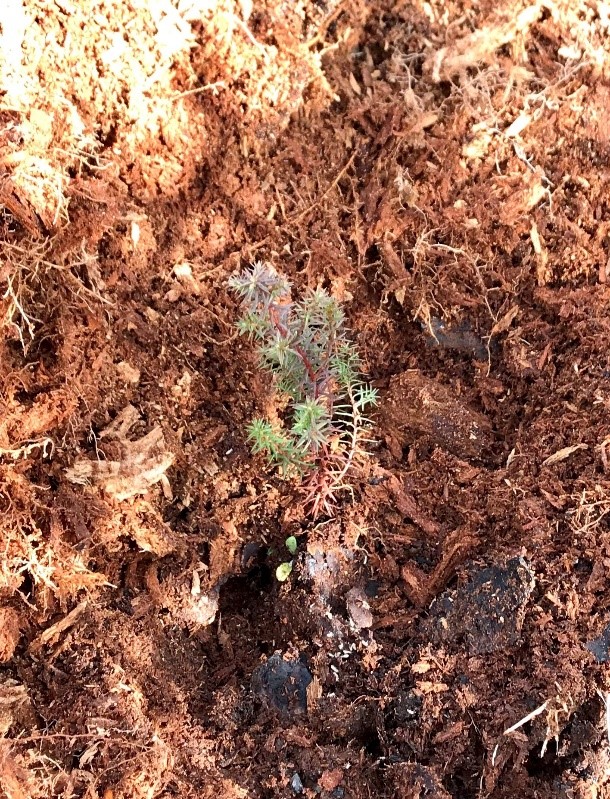Field Notes: Atlantic White-cedar Makes a Comeback?
March 18, 2021 4:11 pm

By Scott Bachman, DOF Senior Area Forester, Blackwater Work Area
A number of years back, a hurricane made landfall on the Outer Banks of North Carolina and forced her way through the southeastern coastal area of Virginia on the way to dumping flooding rains on the remainder of the Commonwealth. That storm was Isabel. In her wake, she left 32 people dead and more than 1.85 billion dollars in damage.
Directly in the path of the storm were Chesapeake and Suffolk. In addition to homes and businesses, the forests in these cities were significantly impacted. The forests of the Great Dismal Swamp, historically the last refuge of native Atlantic white-cedar (Chamaecyparis thyoides) in Virginia, were not spared.
You can imagine what happens when very soft swamp soils with little mineral content, tall mature timber, and high winds meet. Large swaths of timber were toppled by the force of Isabel’s winds. This “blown down” timber was eventually salvage logged by the US Fish and Wildlife Service, the caretakers of the swamp. In a happy accident, this disturbance resulted in a flush of Atlantic white- cedar regeneration arising from buried seed in the organic soil.

Atlantic white-cedar to the casual observer (myself included) appears identical to eastern redcedar, a common Virginia native tree. Their forms and shapes are similar, as is their scale-like evergreen foliage. How might you tell them apart, you ask? Their preferred growing sites are anything but similar. Atlantic white-cedar is found naturally on organic soils, which form in places with a high water table, where organic debris like leaves, needles, branches, logs, and even the occasional dead deer do not fully decompose. In a dry upland site, this organic material is mixed with the mineral soil through the action of animals and weathering. In the swamp, however, this “unincorporated” material becomes essentially compost, or peat. It is a productive but very wet soil type, at least during normal times.
Years after Isabel led to regeneration of white-cedar in the swamp, a drought settled in over southeastern Virginia. Eventually, a thunderstorm brewed over the Great Dismal, and a lightning bolt flashed in a cloud-to-ground strike, hitting the now dry organic soil. It was likely several days before a visible plume of smoke could be seen over the swamp, and a “peat fire” was underway.
Unfortunately, organic soil is made of carbon, just like coal (which, if given enough time and the proper conditions, this “peat soil” might become). This means that if it catches on fire, like it did during the thunderstorm, it can burn for a very long time. In fact, it tends to burn until most of the organic soil, which may be several feet deep, is consumed. This makes peat fires extremely hard to extinguish. Fire crews from all over the country came to the swamp to battle the fire, but by the time they were able to moisten the organic soil by blocking ditches and pumping water, much of the newly regenerated Atlantic white-cedar had been destroyed.
Today there are acres of shallow waters and, in some cases, invasive wetland plants like Phragmites australis where the regenerating white-cedar forest once was. Most of the organic soil was destroyed, but in some areas there is enough left to support an Atlantic white-cedar forest. Without a seed source, however, the forest needed the help of scientists and foresters to get started.
Jen Wright, a biologist at the Great Dismal Swamp, and Josh Bennicoff, the Garland Gray Nursery manager, entered into a partnership early in 2020 to grow Atlantic white-cedar seedlings in the DOF containerized nursery. This was test, as DOF had not attempted to grow this species before. After securing “pelletized” seeds from the North Carolina Forest Service nursery, Josh was able to plant the very tiny seeds using our pine seed equipment. Had they not been pelletized, Josh would have had to plant thousands of poppy-seed sized seeds by hand! By midsummer this group of test seedlings were well on their way to being ready for planting in their new home. At the end of the growing season, the year-old seedlings were packaged and transported — destined for planting in the burn-scarred area.

In early December of 2020, volunteers gathered at the Dismal Swamp office on a Saturday morning to take the two thousand or so seedlings out to the planting sites. This wasn’t just any planting though; to get to the sites, the volunteers often had to canoe! The seedlings, though small, will hopefully find the swamp a great home and enhance the efforts to reforest the burned area with Atlantic white-cedar.


If the plantings are successful and become established, hopefully this partnership between the Great Dismal Swamp National Wildlife Refuge and the Virginia Department of Forestry’s Garland Gray Forestry Center will grow and positively improve other habitats on the Refuge. We look forward to following the growth of these seedlings into the future!
Tags: Partnerships, Species Restoration, Tree Planting, Wildlife
Category: Forest Management, Research
